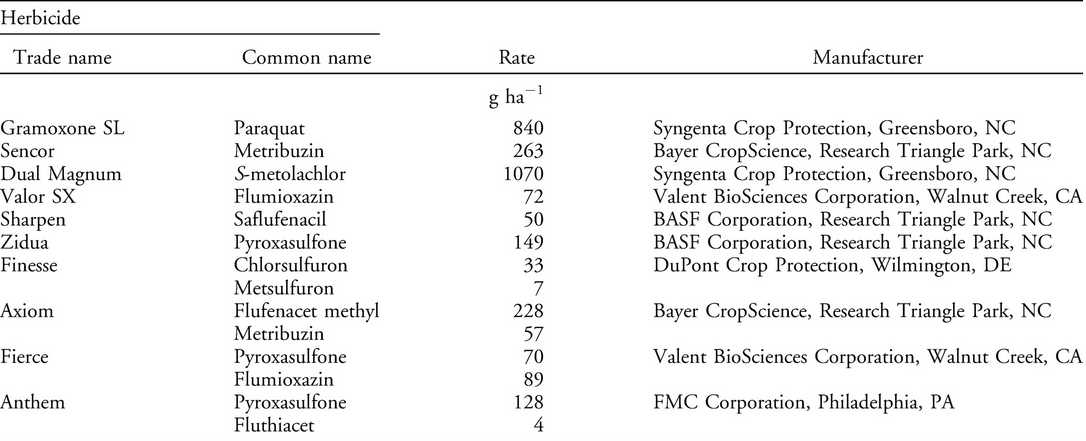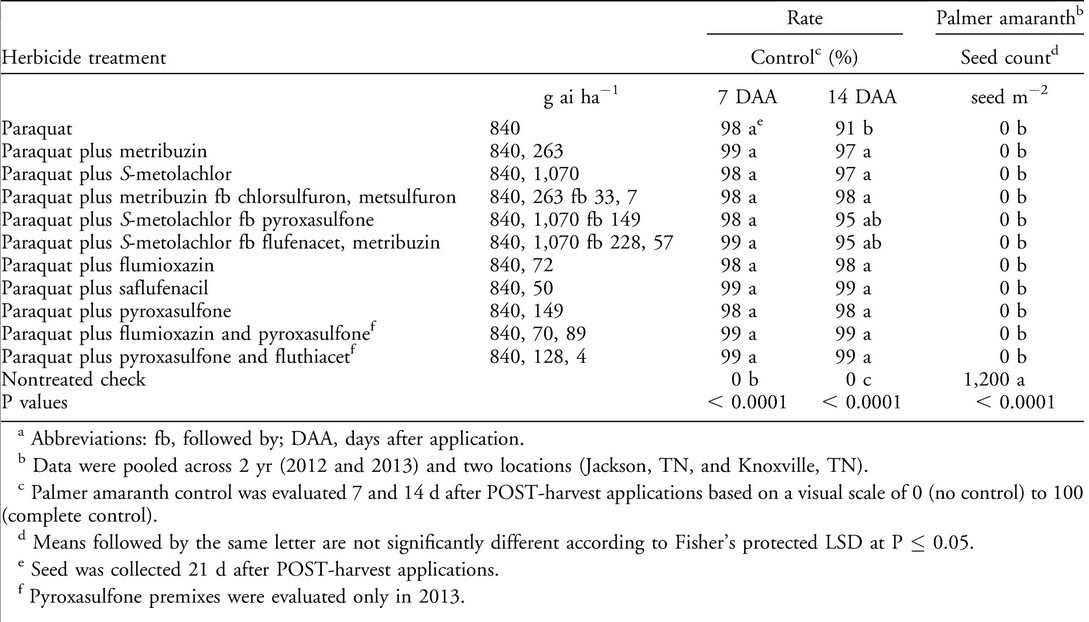A study featured in the most recent issue of the journal Weed Technology shows that post-harvest treatment of glyphosate-resistant Palmer amaranth can significantly reduce seed production and help to control the spread of the weed’s resistant traits.
A research team from the University of Tennessee treated one field after corn was harvested in 2012, and two fields after corn harvest in 2013, to evaluate the post-harvest Palmer amaranth control in corn and subsequent herbicide injury to fall-seeded, no-till winter wheat.
Post-harvest herbicides included paraquat applied alone or in combination with a residual herbicide (Table 1). All post-harvest herbicide applications also contained non-ionic surfactant at 0.25%. Three post-harvest herbicide applications were followed by a pre-emergence herbicide application of pyroxasulfone, fulfenacet methyl or chlorsulfuron plus metsulfuron methyl.  Table 1.
Table 1.
The post-harvest herbicide applications were made to Palmer amaranth that ranged in height from 6cm-50cm, with many of them beginning to flower but not yet producing seed, whereas pre-emergence applications were made to no-till wheat at the time of planting.
Palmer amaranth control was evaluated at post-harvest application timings of 7 and 14 days after application, using a scale of 0 (no control) to 100 (complete control) based on visual estimates compared with non-treated checks. Palmer amaranth seed was also collected from plants just before wheat planting. The researchers also evaluated wheat injury from pre-emergence herbicides at crop emergence, using a scale of 0 (no injury) to 100 (plant death) based on visual estimates of wheat phytotoxicity, compared with the non-treated check.
All treatments had at least 98% control of glyphosate-resistant Palmer amaranth 7 days after application. Paraquat alone or paraquat tank-mixed with S-metolachlor provided less control than all other treatments by 14 days after application (Table 2). Table 2.
Table 2.
Although paraquat desiccated existing Palmer amaranth, regrowth occurred from larger plants, suggesting that adding a photosystem II-inhibiting or protoporphyrinogen oxidase-inhibiting herbicide to paraquat aided in controlling plant regrowth, as well as preventing additional plants from emerging.
All treatments prevented seed production of glyphosate-resistant Palmer amaranth, even when weed control wasn’t complete. Replenishment of the seedbank was reduced by 1,200 seeds per square meter. Of these seed, more than 80% came from plants that recovered from damaged inflicted by the mechanical corn harvesting equipment. Germination percentage of Palmer amaranth seed collected after corn harvest was 70%. This suggests that in corn production in the southern region, Palmer amaranth severed near the soil line during harvest could still grow back and produce seed before the first frost.
Treatments that didn’t receive a pre-emergence herbicide application had no wheat injury on the basis of visual estimates, indicating there was no herbicide carryover from post-harvest application.
Full text of the article, “Evaluation of POST-Harvest Herbicide Applications for Seed Prevention of Glyphosate-Resistant Palmer amaranth (Amaranthus palmeri),” is now available in Weed Technology Vol. 29, Issue 3, July-September 2015.






Post a comment
Report Abusive Comment